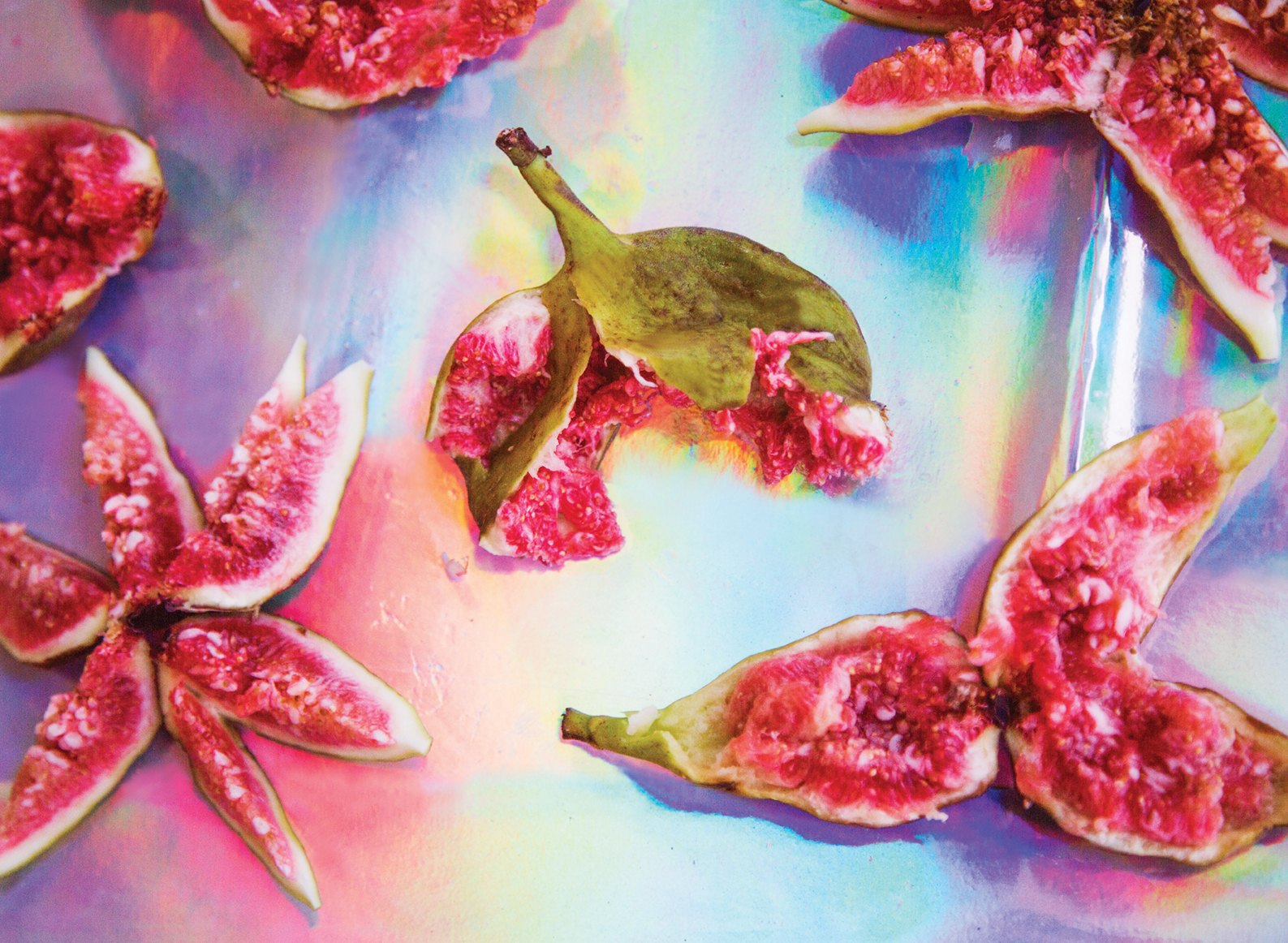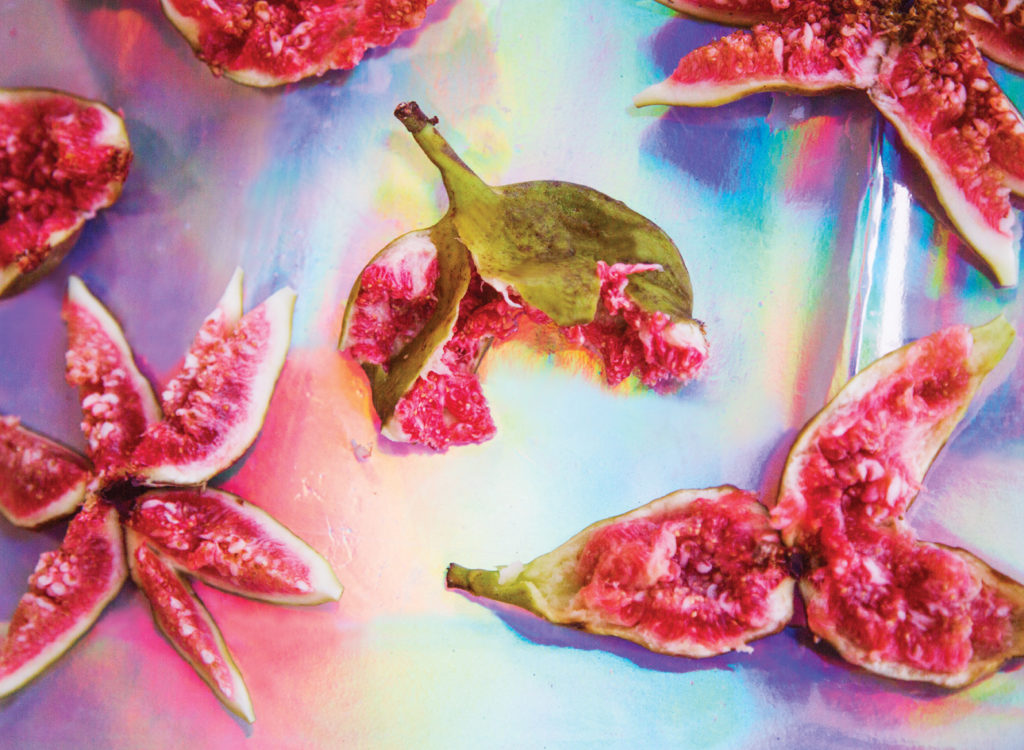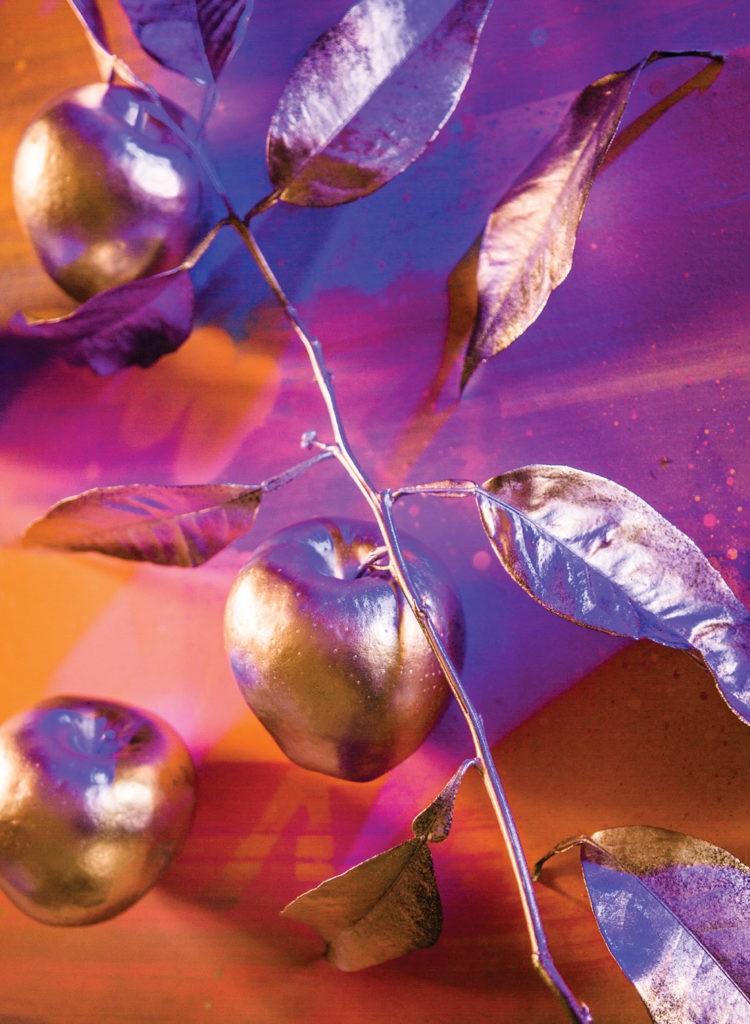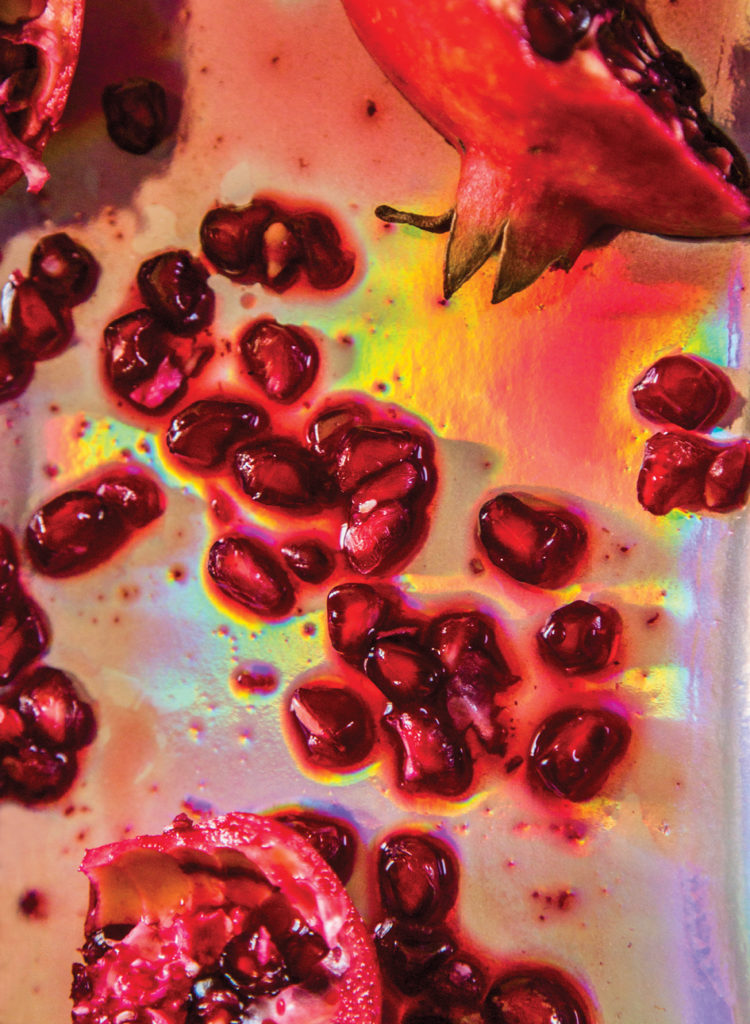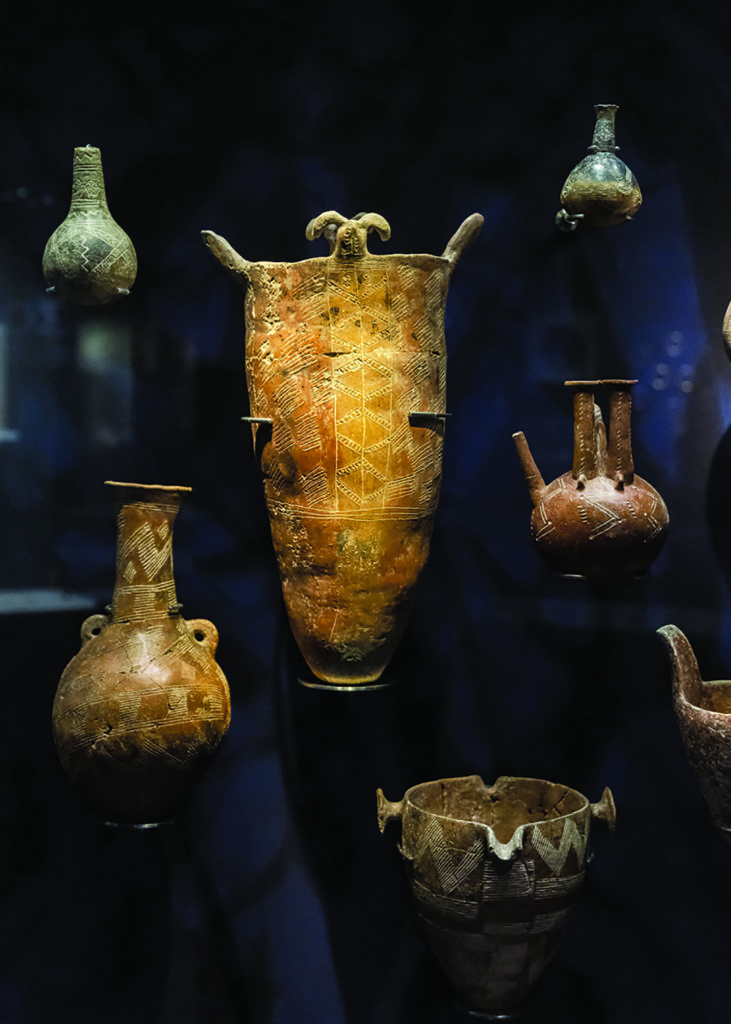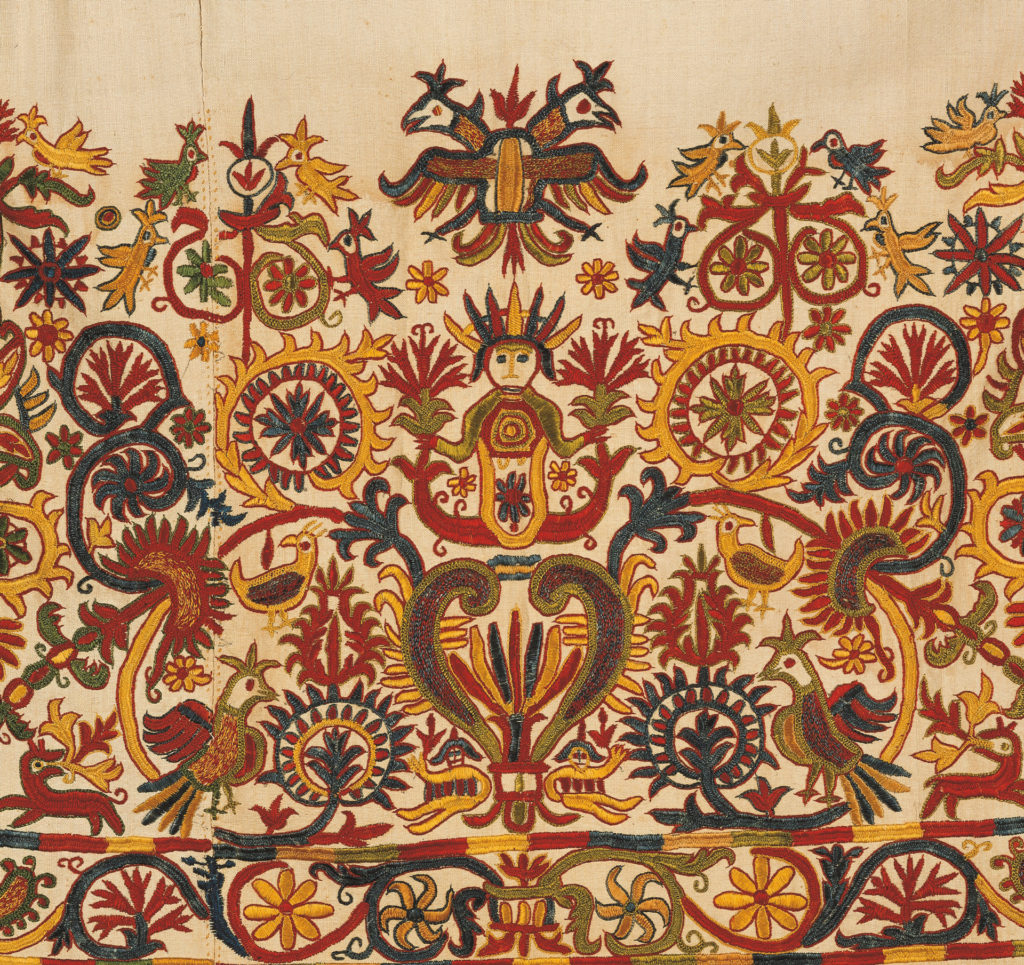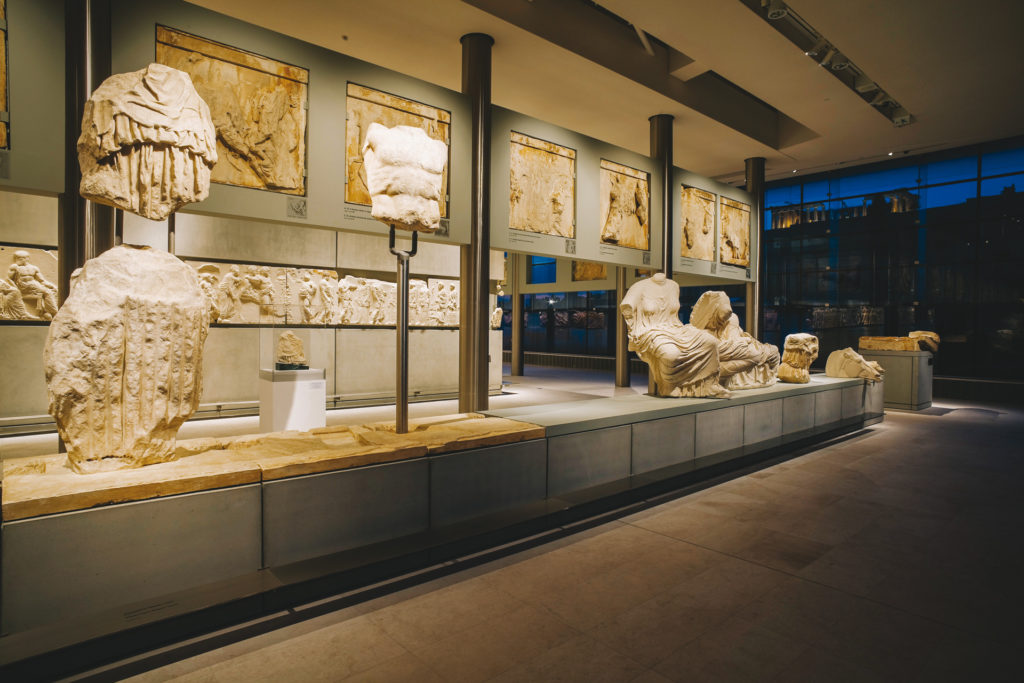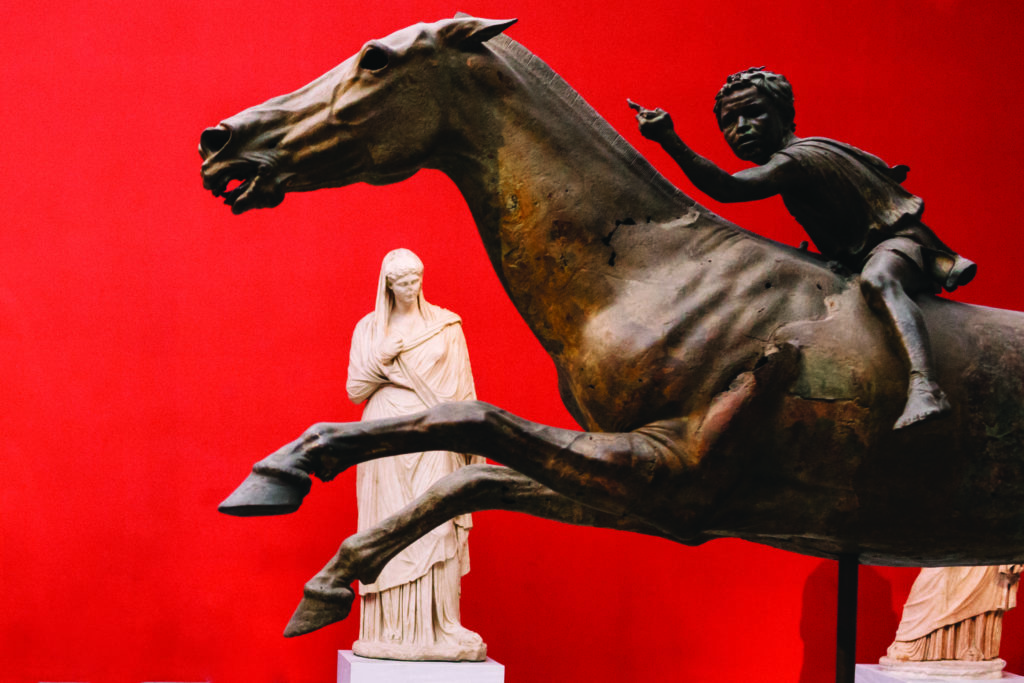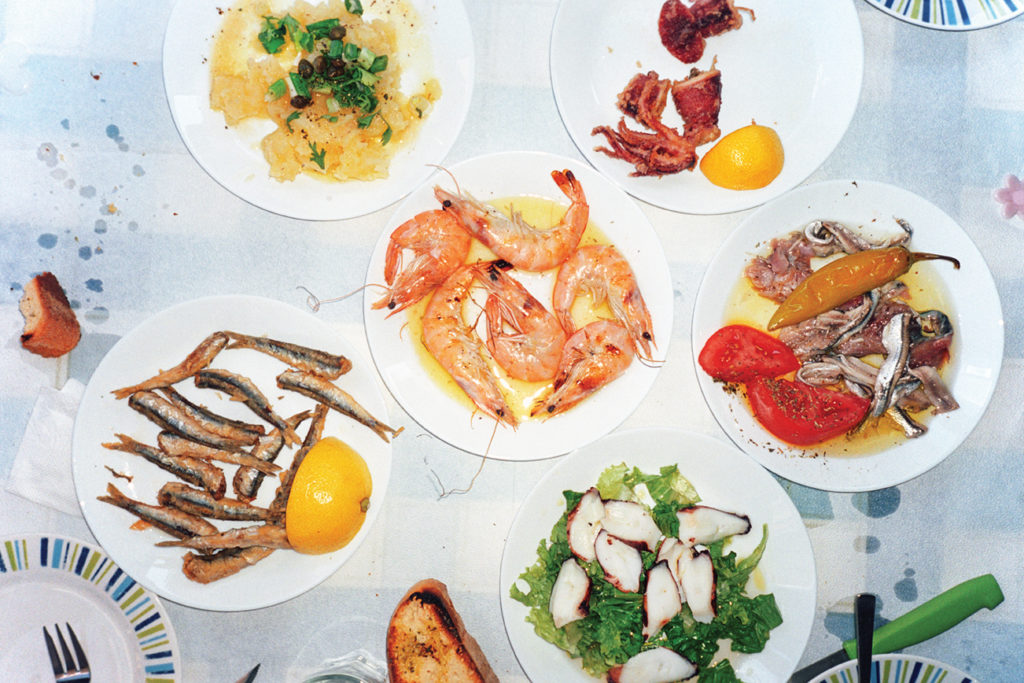Ancient Greek Gods and mythological heroes possessed supernatural powers, such as the ability to transform mortals into animals, plants, or even natural phenomena like rain, or mist. They were able to divert the course of wars, bring mortals back from the dead, give birth through their heads and create tempests, or earthquakes. A look into their dietary habits reveals that their choices in this area were admittedly equally surprising.1 Contrary to evidence-based data, which has revealed the variety of food consumed by Ancient Greeks in different occasions —take, for example, the exotic pickled fish remains found in the Punic Amphora Building2 of the Corinthian Agora, or the meat consumed during the sacrifices to Gods3— literature and iconography on Ancient Greek myth showcases that Gods and heroes were slightly more eclectic than mortals.4 In fact, food and drink in mythology largely revolves around sweet, hallucinogenic, or healing substances, most frequently in the form of liquids, or fruit.
Ambrosia
Ambrosia and nectar were, allegedly, the main substances consumed by the Gods. Ambrosia, which etymologically signifies immortality, was said to pour endlessly from the horn of Amaltheia, the foster mother of Zeus, often materializing in the form of a “holy goat”. I too have seen the Goddess, descending from the Acropolis with an owl perched upon her helmet; on your head she was pouring out ambrosia (…) exclaims the Sausage-Seller in Aristophanes “Knights”,6 a quote displaying the Ancient Greek idea that ambrosia was, in fact, liquid. Ambrosia has been interpreted as a honey-based syrup, which was not only edible but also used as a medicine, applicable to the body, in order to make it more beautiful. The Gods loved it: they ate it, drunk it, even anointed themselves with it. Moreover, both nectar and ambrosia were fragrant and may have been used as perfumes. In Homer’s “Odyssey”, for example, Menelaus and his men are disguised as seals in untanned seal skins of terrible stench, but the Goddess brought and placed ambrosia of a very sweet fragrance beneath each man’s nose and destroyed the stench of the beast (Homer, Odyssey, Book 4, line 445)
Figs
Another seedy fruit encountered in Greek mythology is the fig. The fig is associated with Dionysus, the God of wine and drunkenness, but also with Priapus, a minor rustic fertility God, who protected plants, gardens and male reproductive organs. During the Hellenistic and Roman periods, the wood of the fig tree was used to make statues of Priapus, who is always portrayed with an oversized erection. In the “Palatine Anthology”, Priapus not only appears as the protector of the fig tree and the fruit, but also becomes the subject of many puns on the term “ficus” (fig), which also means “anus” or “hemorrhoid”. In the final scene of Aristophanes “Peace”, Trygaeus announces the commencement of a wedding feast and uses the verb “sukologein” (to have/pick figs), to denote copulation.8 In Ovid and Horace, the fig, but also the fig tree, which was considered a second-class quality wood, form an obscene and even inappropriate lattice of concepts.
Lotus
It is the Odyssey that made the fruit and blossom of the lotus tree famous for making whomever consumed them carefree and oblivious to any sorrow. The Lotus – Eaters were an island tribe dwelling either towards the northern part of Greece (according to Homer), or across the northern coast of Africa (according to Herodotus, Polybius, Strabo, Apollodorus and other later sources). Regardless of the actual location of the Lotus – Eaters, the lotus fruit was unanimously described as a narcotic, which brought about sleep and “lethe”, forgetfulness. This state of bliss has been praised by various Classical Greek authors, like Euripides, who, in “The Trojan Women” has Cassandra, the cursed prophetess, cry out how the shipwrecked Odysseus will “long to eat the lotus” to be soothed. As it frequently occurs in mythology, we are unaware of the actual shape and taste of the lotus flower, or fruit and it is highly unlikely that the latter resembles the fruit as we know it today. Herodotus, for example, claims that many lilies, which the Egyptians call lotus, grow in the water, while the true form and taste of the fruit is still largely open to various interpretations.
Wine
It is far from surprising that mortals, Gods and heroes enjoyed and honored wine equally. Wine was associated with Dionysus, as well as with the Maenads, the female followers of his orgiastic cult. The intoxicating and hallucinogenic wine lured everyone to an ecstatic frenzy, hence the frequent depictions of Dionysus and the Maenads on Greek pottery – especially on “kraters”, the pots used to water down the wine. Unlike modern and contemporary habits, ancient Greeks did not accompany their meals with wine. Wine was enjoyed separately, at banquets (“symposia”, which literally means co-drinking), in which only men were allowed to participate, with the occasional rare presence of a female. Further to this, ancient Greeks believed that wine was the means to approach the Gods: when you have enough wine, your body gets possessed by Dionysus, the Muses and Eros, the winged God of love.
The Apples of the Hesperides
Hercules’ eleventh labor revolved around stealing the apples from “the garden of the Hesperides”. The Hesperides were the nymphs of the balmy sunset light and keepers of the golden and gleaming apples, which granted immortality to those who got to eat them. The garden of the Hesperides was allegedly located in Northern Africa, clearly the exotic periphery in Ancient Greek terms, while the apples were considered to be sweet and especially tasty. Hercules’ attempt to steal the apples from the garden of the Hesperides and bring them back to the mortals has inspired numerous poets and authors; William Shakespeare mentions the apples in “Pericles Prince of Tyre” and, most famously, in “Love’s Labor’s Lost”: For valor, is not Love a Hercules, Still climbing trees in the Hesperides? The motif of the golden apple recurs in Greek Mythology through the fable of the Trojan War and Paris judgement. The golden apple became the symbol of the start of the epic war between the Greeks and the Trojans. During the wedding banquet of Peleus and Thetis, Zeus asked Paris, a Trojan mortal, to hand a golden apple with the inscription To the fairest to whichever godess he found the most beautiful, Athena, Hera, or Aphrodite. Paris handed the apple to the latter, accepting her offer to be loved by the most beautiful woman on earth, Helen of Sparta. Thus, myth and Homer claim, the Trojan War was waged.
Pomegranates
Pomegranate also appears in Greek mythology, in the myth of the “Goddess of earth and crops”, Demeter and her daughter, Persephone. One day, as Persephone was picking flowers, Hades, the God of the Underworld, seized her and abducted her to his dark kingdom, so as to become his bride. Demeter, in grief and anger, refused to let crops grow unless she got her daughter back, threatening mortals with famish and poverty. Zeus had to take the matter in his own mighty hands and ordered Hades to release Persephone. Cunning Hades agreed, but before letting Persephone go, he convinced her to eat six pomegranate seeds, the “fruit of the dead”. Having consumed them, Persephone was doomed to never be freed of this place completely and had to spend the rest of her life, splitting her time between the underworld and the world of the living. This is the way that ancient Greeks explained the changes in seasons and the annual growing circle of plants and crops.
Footnotes
- Burkert, W., Homo Necans: The Anthropology of Ancient Greek Sacrificial Ritual and Myth (1983)
- Williams C.K. 1979: “Corinth, 1978: Forum Southwest“, Hesperia 48, 105-144
- Beardsworth, A. and T. Keil, Sociology on the Menu: An Invitation to the Study of Food and Society (1997)
- Lévi-Strauss, C., The Raw and the Cooked: Introduction to a science of mythology I (1975)
- Wright, F. A., “The Food of the Gods“, The Classical Review 31.1, (February 1917:4–6).
- Whitney J. Oates and Eugene O’Neill Jr. (eds), The Complete Greek Drama: All the Extant Tragedies of Aeschylus, Sophocles and Euripides, and the Comedies of Aristophanes and Menander, in a Variety of Translations, 2 Volumes, Random House, 1938.
- Homer, “The Odyssey with an English Translation by A.T. Murray“, in two volumes. Cambridge, MA., Harvard University Press; London, William Heinemann, Ltd. 1919.
- Aristophanis comoediae auctoritate libri praeclarissimi saeculi decimi emendatae a Philippo Invernizio, Volume 1, Richard François Philippe Brunck (ed.), In Libraria Weidmannia, 1794.
General Bibliography
“Beyond the Greco-Roman world.“ In J. Wilkins, D. Harvey and M. Dobson, eds., Food in Antiquity (1995)
Burkert, W., Oriental symposia: contrasts and parallels, 7-24. In W.J. Slater, ed., Dining in a Classical Context (1991)
Darby, W.J., P. Ghaliourgi, and L. Grivetti, eds., Food: the gift of Osiris (1977)
Detienne, M., Between beasts and gods. In R.L. Gordon, ed., Myth, religion and society (1981)
Detienne, M. and J.-P. Vernant, The Cuisine of Sacrifice among the Greeks (1989)
Durand, J-L and A. Schnapp, Sacrificial slaughter and the initiatory hunt. In C. Bérard, A City of Images: iconography and society in ancient Greece (1989)
Gordon, R.L., ed., Myth, religion and society (1981) (Vernant, J.-P., The myth of Prometheus in Hesiod; Sacrificial and alimentary codes in Hesiod“s myth of Prometheus)
Hall, E. Inventing the Barbarian (1989)
Hartog, F., The Mirror of Herodotus: the representation of the other in the writing of history (1988)
Leach, E.R., Oysters, smoked salmon and stilton cheese. In Lévi-Strauss (1970)
Lévi-Strauss, C., The Raw and the Cooked: Introduction to a science of mythology I (1975)
Longo, O., “The food of others“, in A. Sonnenfeld, ed., Food: A Culinary History from Antiquity to the Present (1999) 153-162.
Shaw, B., “Eaters of flesh, drinkers of milk“: the ancient Mediterranean ideology of the pastoral nomad. Ancient Society 13/14 (1982/83): 5-31.
Simoons, F.J., Eat Not This Flesh: food avoidances in the Old World (1961)
Vernant, J.-P., Food in the countries of the sun. In M. Detienne and J.-P. Vernant, The Cuisine of Sacrifice among the Greeks (1989)
Vernant, J.-P., Myth and Society in Ancient Greece (1980)
Vidal-Naquet, P., Land and sacrifice in the Odyssey: a study of religious and mythical meanings. In R.L. Gordon, ed., Myth, religion and society (1981).

